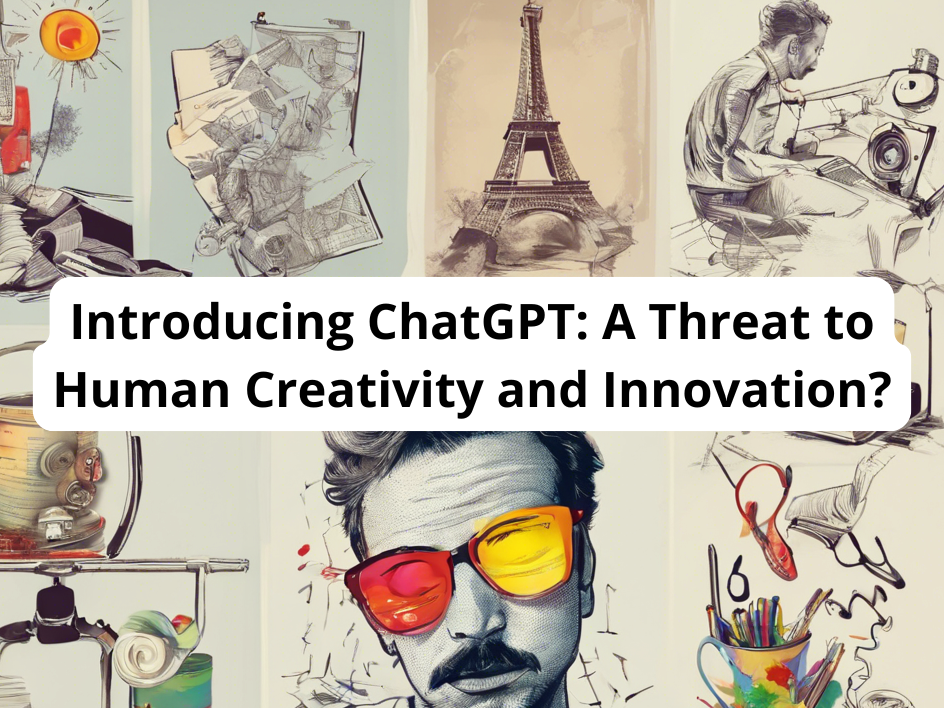
It has garnered attention for its ability to understand and respond to text-based prompts. However, with the rise of AI-powered tools like ChatGPT, concerns have been raised about their potential impact on human creativity and innovation. In this article, we will explore the implications of ChatGPT and whether it poses a threat or an opportunity for human ingenuity.
ChatGPT is an advanced language model developed by OpenAI. It belongs to the family of AI models known as GPT, which stands for “Generative Pre-trained Transformer.” The Transformer architecture, on which ChatGPT is based, has revolutionized natural language processing tasks.
At its core, ChatGPT is designed to engage in interactive conversations with users, providing human-like responses to text-based prompts. It has been trained on massive amounts of diverse text data, enabling it to understand the context and generate coherent and contextually relevant responses.
The training process involves exposing ChatGPT to a wide range of sources, such as books, articles, websites, and other written materials. Through this exposure, the model learns the patterns, grammar, and semantic relationships within the text. It uses this knowledge to generate responses that are coherent, informative, and contextually appropriate.
ChatGPT’s architecture consists of several layers of attention mechanisms and feed-forward neural networks. These layers enable it to process and understand the complex structures of language. The model can generate responses by predicting the most probable next word or phrase based on the context it receives.
The development of ChatGPT has been driven by the objective of creating an AI system that can engage in natural, human-like conversations. The model has undergone several iterations and improvements, with each version building upon the successes and limitations of its predecessors.
Potential Benefits of ChatGPT
ChatGPT offers several potential benefits that can contribute to various fields and industries. First and foremost, it serves as a valuable tool for information retrieval and knowledge expansion. Users can interact with ChatGPT to obtain answers to their questions, access relevant resources, and discover new insights. This accessibility to information can facilitate learning and research processes, making knowledge more readily available.
Furthermore, ChatGPT can enhance productivity and efficiency. It can assist in tasks such as drafting emails, generating code, or providing customer support. By automating routine or time-consuming processes, ChatGPT frees up human resources to focus on more complex and creative endeavors. It can be a valuable asset for businesses looking to streamline their operations and improve customer service.
Concerns and Limitations of ChatGPT
Despite its potential benefits, ChatGPT is not without its concerns and limitations. One major concern is the issue of bias in AI models. ChatGPT’s responses are generated based on the data it has been trained on, and if the training data contains biases, the model may inadvertently reinforce or perpetuate them. This can lead to biased or unfair responses, which can have real-world consequences.
Another limitation is the lack of contextual understanding. While ChatGPT excels at generating coherent text, it may struggle to grasp the nuances of a conversation or accurately interpret complex queries. It may produce responses that sound plausible but are factually incorrect or misleading. This limitation highlights the need for caution when relying solely on ChatGPT for critical decision-making or sensitive matters.
Impact on Creativity and Innovation
Now let’s delve into the central question: Is ChatGPT a threat to human creativity and innovation? Some argue that AI models like ChatGPT can stifle human creativity by replacing the need for original thinking. They worry that people may become overly reliant on AI-generated content, diminishing their own creative capacities.
However, there is another perspective to consider. ChatGPT can actually serve as a tool for enhancing human creativity and innovation. By providing instant access to vast amounts of information, it can inspire new ideas and expand the boundaries of knowledge. It can act as a catalyst for brainstorming sessions, helping individuals explore different perspectives and uncover fresh insights.
ChatGPT as a Tool for Creativity and Innovation
Rather than perceiving ChatGPT as a threat, we can view it as a collaborative partner in the creative process. ChatGPT can assist in idea generation by offering suggestions and refining concepts. It can provide a starting point for exploration, encouraging users to build upon its generated content and add their own unique flair.
For writers, ChatGPT can be a valuable writing companion, helping to overcome writer’s block and generating alternative approaches to storytelling. It can provide different writing styles, character suggestions, or plot twists, acting as a co-creator in the writing process.
Enhancing Human Creativity with ChatGPT
To maximize the benefits of ChatGPT, it is important to embrace a symbiotic relationship between humans and AI. Rather than relying solely on AI-generated content, humans should leverage ChatGPT as a source of inspiration and guidance. By incorporating AI-generated ideas into their own creative endeavors, individuals can harness the power of AI while maintaining their unique perspective and personal touch.
Moreover, collaboration between humans and ChatGPT can lead to novel and innovative solutions. Through iterative feedback and refinement, the collective intelligence of humans and AI can result in groundbreaking advancements in various domains, such as art, design, and scientific research.
